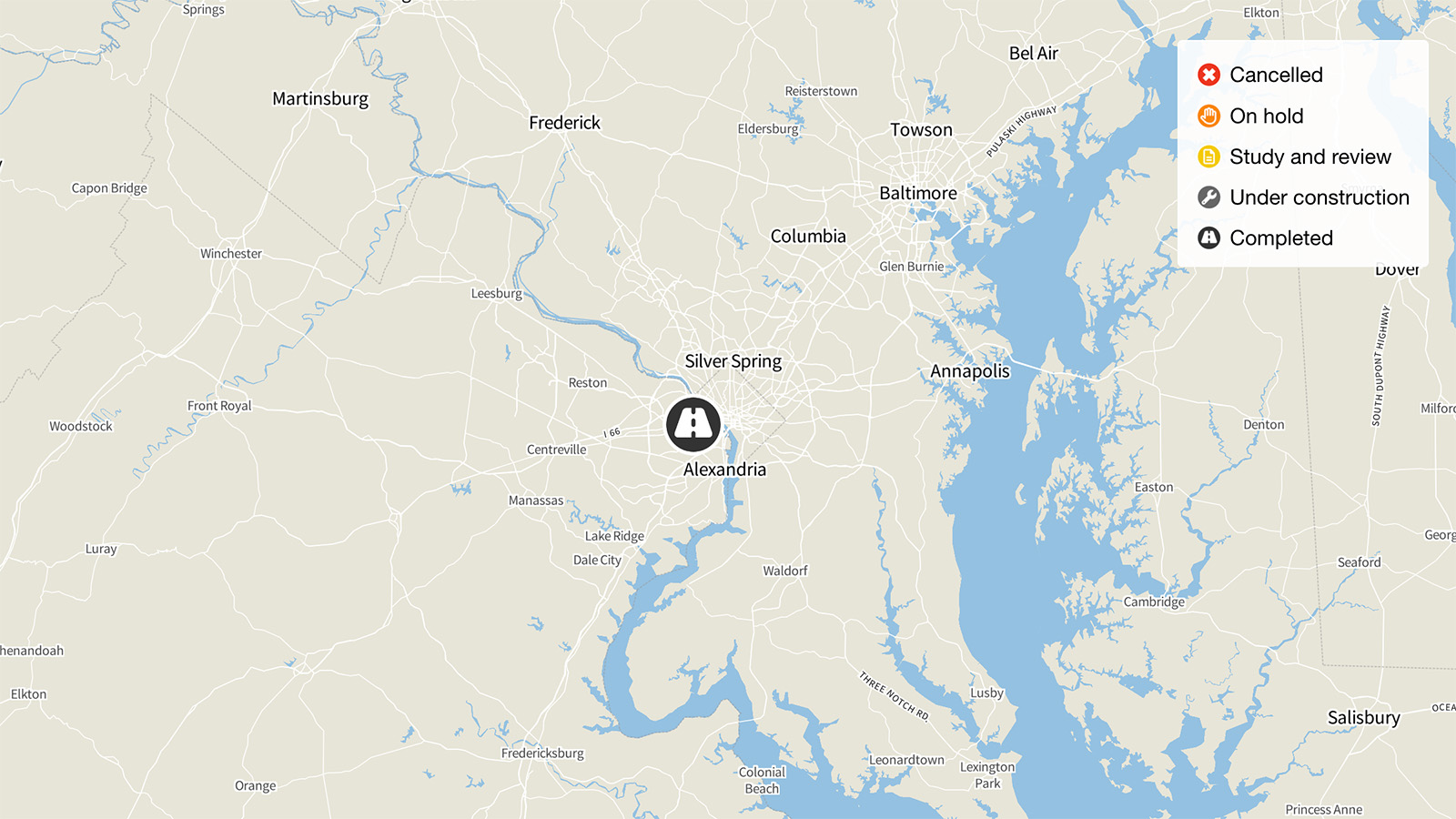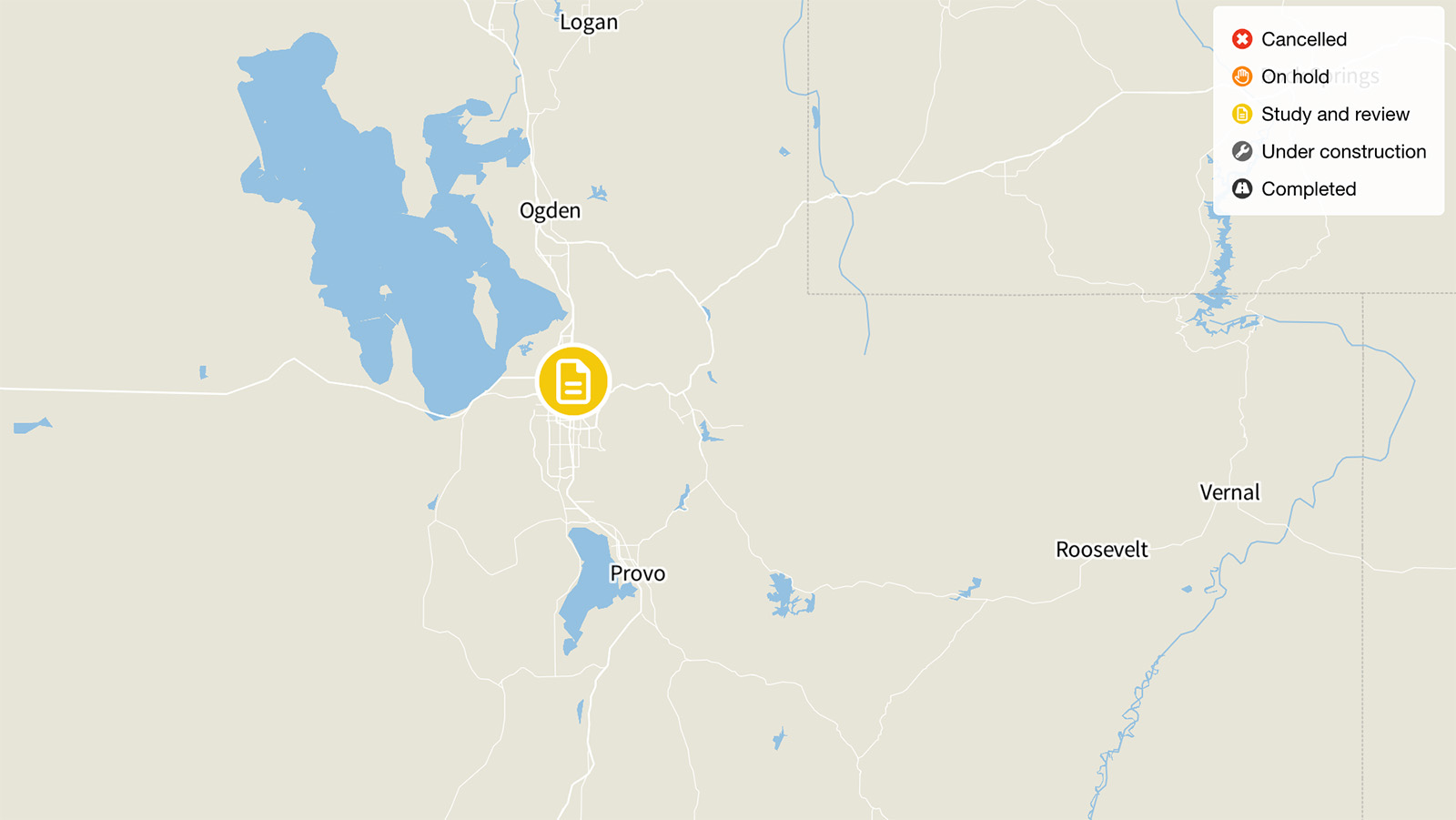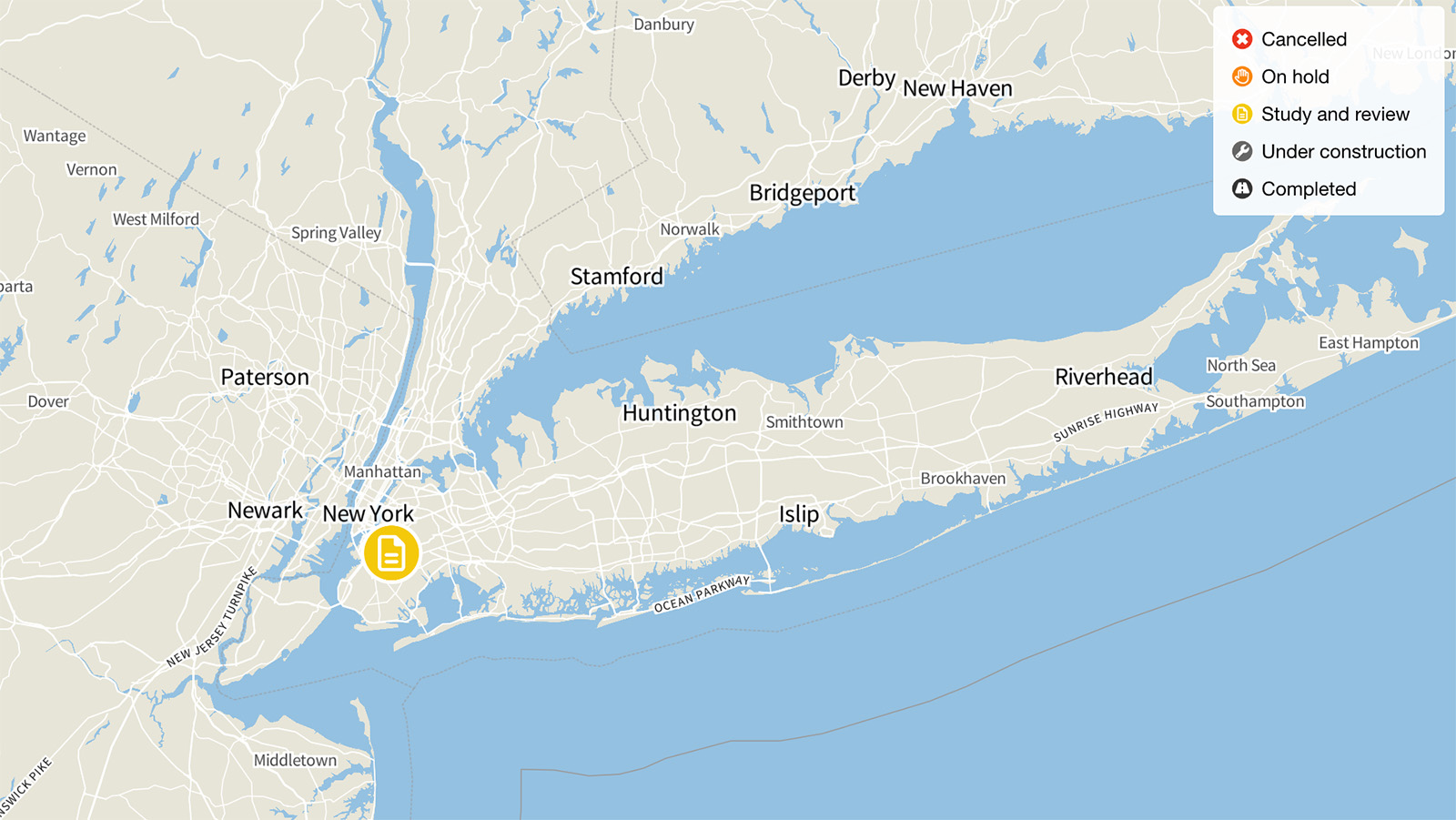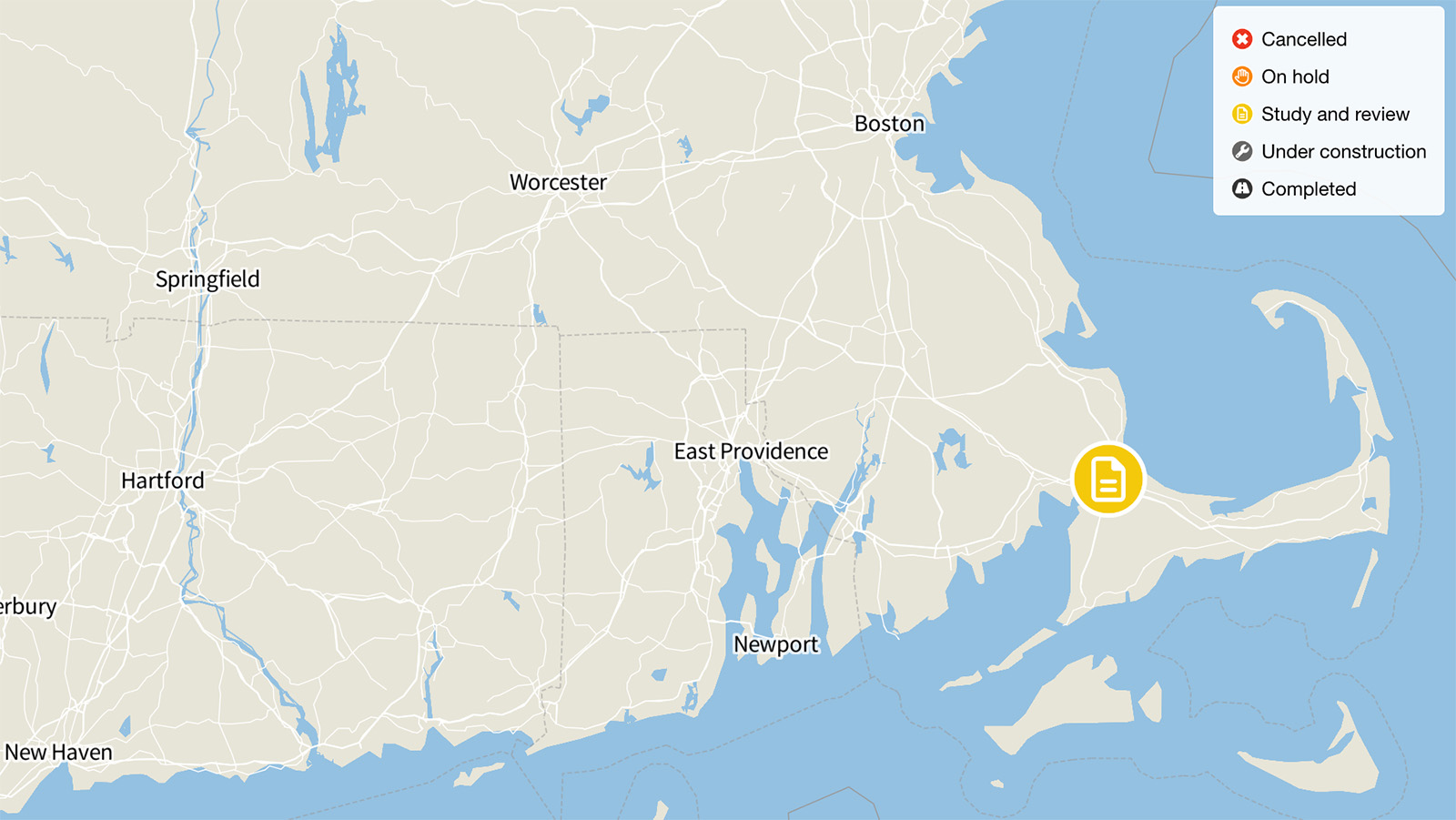
Interstate 66 Expansion “Inside the Beltway,” Virginia
The Washington, D.C., area experiences legendary traffic congestion. For decades, the Capital region has been of two minds about how to address traffic: lay more asphalt or provide alternatives to driving through investments in transit, smart land use, and transportation demand management.

Status: Completed
Originally reported cost: $140 million
Update for current status:
As of May 2022, the I-66 “Inside the Beltway” project was complete.
Update from Highway Boondoggles 4, 2018:
Virginia officials are planning to widen Interstate 66, which travels from Washington, D.C., to Virginia suburbs. Originally, the road expansion was set to take place only after thorough research of other elements of the project, including addressing traffic through demand management, and providing resources to expand the range of transportation choices available to people along the corridor. Yet that plan was derailed in the state legislature, resulting in a new plan that would widen the road immediately. According to the project’s environmental assessment, the widening will lead to increased driving. Arlington County has also expressed concern about the potential for increased noise, the impact on local streets, and other issues.
As of February 2018, road crews had begun work surveying the construction area, and construction was set to begin within the year. Congestion pricing has already taken effect on I-66’s existing lanes. Although high rush hour toll prices have generated controversy, early reports also indicate that the prices have reduced congestion.
Original story from Highway Boondoggles 3, 2017:
The Washington, D.C., area experiences legendary traffic congestion. For decades, the Capital region has been of two minds about how to address traffic: lay more asphalt or provide alternatives to driving through investments in transit, smart land use, and transportation demand management.
Arlington County, Virginia, located across the Potomac River from Washington, has long exemplified the latter approach. When the D.C. region began planning the Metrorail system in the 1960s, with two lines running through Arlington County, county officials lobbied for what would later be called a “smart growth” approach to the region’s future – pushing for the Metro Orange Line to connect existing town centers as opposed to being built in a highway median, and focusing intense new development near the Metro stations while preserving the suburban feel of much of the county. Over the decades, Arlington County also became a national leader in transportation demand management – investing in infrastructure and partnering with local businesses and institutions to encourage travel by means other than single-occupancy driving.
Those efforts paid off. By 2011, the county’s transportation demand management programs were shifting more than 40,000 car trips each day to other modes, reducing traffic and congestion. In 2013, 46 percent of workers in Arlington County used modes other than driving to work, compared with just 34 percent in the D.C. region as a whole. And, despite 40 percent growth in jobs and population over the previous three decades, the number of cars traveling on major streets in the county increased only modestly, and on some streets even declined.
Interstate 66, which travels through the county between Washington, D.C., and more-distant Virginia suburbs, has long been an example of this approach to encouraging shared rides and reducing vehicle trips. Since its opening in Arlington County in 1982, the roadway has been dedicated entirely to high-occupancy vehicles (along with vehicles serving Dulles International Airport) heading into D.C. in the morning and out of the city in the evening.
Today, while traffic in the peak direction is much reduced by the HOV restrictions, I-66 experiences congestion at other periods. Indeed, the highest traffic levels are often in the “reverse commute” direction during rush hours. Moreover, the success of Arlington’s efforts to promote transit-oriented development has led to more demands for improved transit, bicycling and pedestrian connections.
To address those challenges, the state of Virginia initiated a process to evaluate alternatives for the I-66 corridor. The result was a 2012 state-commissioned report that recommended a package of improvements, including the conversion of I-66 to a high-occupancy/toll road – with tolls varying based on the level of congestion – during rush hours. In 2015, regional planners and Arlington County officials expressed support for the plan under the assumption that toll revenue from the road would be used to support expanded multimodal transportation options in the corridor and that the study’s proposed widening of parts of I-66 would be deferred until the success of the tolling and multimodal portions of the plan were evaluated, or at least until 2025.
The plan was consistent with Arlington County’s successful track record of addressing traffic through demand management, providing resources to expand the range of transportation choices available to people along the corridor. It would also have averted the expenditure of $140 million by the Commonwealth of Virginia on a road widening that might never have become necessary.
The proposal, however, attracted opposition from some leaders in the Virginia Legislature, including representatives of counties in D.C.’s exurbs, who filed legislation to block it.
The objections led to several compromises in the plan – including the elimination of tolls in the reverse commute direction (which often experiences significant congestion) and abandonment of a plan to raise the HOV threshold from two to three occupants. It was, however, legislators’ insistence that widening of the eastbound side of I-66 happen immediately – not years in the future – that nearly brought the effort to a screeching halt. In February 2016, however, Virginia Gov. Terry McAuliffe reached a compromise with the Legislature in which the widening was permitted to proceed.
The overall project may still deliver net benefits for the D.C. area. The region is already moving forward with a series of multimodal projects, including expanded bus service and the installation of transit information screens in key areas, that will be in place when tolling begins on I-66.
But the expensive widening of I-66 will create problems that the previous plan did not. Arlington County has expressed concern about the potential for increased noise, the impact on local streets, and other issues. The Environmental Assessment for the project also forecasts that construction of the additional lane will result in 2.7 percent more vehicle-miles traveled along roads affected by the project by 2040 compared with a “no build” alternative. The political process that led to the addition of widening to the I-66 project also undercuts Virginia’s recent efforts to minimize the impact of politics in transportation planning through the implementation of a data-driven process for project selection.

Topics
Find Out More


I-15 Expansion, Salt Lake City

The Brooklyn-Queens Expressway, New York


